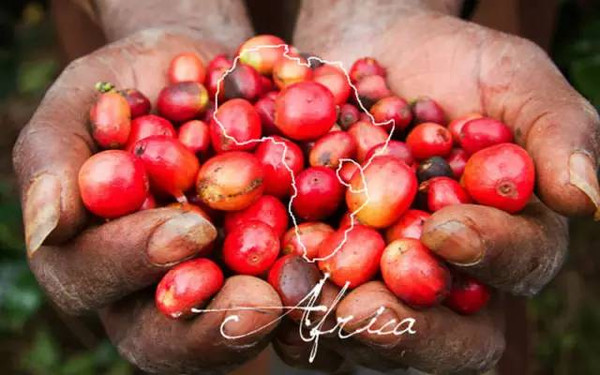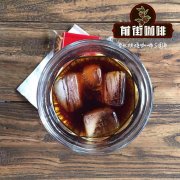Do all coffee trees have the same characteristics of Alabica Roberta coffee tree?

Professional coffee knowledge exchange more coffee bean information please follow the coffee workshop (Wechat official account cafe_style)
Coffee tree, a perennial evergreen shrub or small tree of Rubiaceae, is a horticultural perennial cash crop with the characteristics of fast growth, high yield, high value and wide market. Wild coffee trees can grow to a height of 5 to 10 meters, but coffee trees planted on the manor are often cut to less than 2 meters in order to increase their fruit and facilitate harvesting.
Coffee tree opposite leaves are long oval, smooth leaves, the end of the branch is very long, few branches, and the flowers are white, open at the base of the petiole connecting the branch.
Coffee production ranges from 25 degrees north to 30 degrees south. Coffee bars are vulnerable to frost, which is the most suitable. The average annual temperature in this area is 150.25 °C, and the slopes with abundant rainfall and good drainage of 1500~2000mm, coupled with planting other tall trees, will increase the growth of coffee trees.
There are more than 60 species of coffee plants in the world, of which only 25 are artificially cultivated and used for coffee, of which three are the most important ones:
Arabica (Coffea arabica), Basta (Coffea Robusta), Sabrika (Coffea liberica).
Arabica (Coffea arabica):
Characteristics:
The oldest and most commercially practical coffee beans with a variety of complex species
Planting method:
They like mild days and cooler nights, and a climate that is too cold, too hot and too humid can be fatal to it.
Elaraby needs to plant coffee trees on sloping slopes more than 900m above sea level, so harvesting must be carried out manually, which is extremely difficult. However, due to the excellent aroma, balanced taste and low caffeine content (1.1-1.7%) of Elaraby coffee beans, although it is not easy to grow, it actually accounts for about 7580% of the total coffee planted.
Robasta (Coffea Robusta):
Characteristics:
The one with the highest yield has more personality in taste and is often used for blending or instant coffee.
Planting method:
It has strong resistance to tropical climate, high temperature, cold resistance, moisture resistance, drought resistance, and even mold infestation. It has strong adaptability, can grow very well on flat land, and grows very well at an altitude of 200-300 meters. Harvesting does not necessarily require manual work, but can be carried out entirely by vibration machines. As far as planting is concerned, Robasta has many advantages in growing coffee trees, but it is a pity that the coffee beans produced are bad in aroma, strong in bitterness, insufficient in acidity, and the caffeine content is double that of Arabica, which currently accounts for about 25-30% of the world's coffee production.
Rabirika (Coffea liberica):
Characteristics:
It's a bit of Robastar, and it usually doesn't taste very good.
Planting method:
Less affected by rainfall and temperature, planted below 200 meters above sea level, originated in Liberia, widely distributed, strong tolerance, but poor quality, strong bitterness, poor aroma, so it is not taken seriously, and the planting amount is the least.
Therefore, at present, Arabica and Robasta are the main types of coffee in the world.
Arabica coffee beans are green to light green in color, oval in shape and curved in grooves.
Robastian coffee beans are round in shape, brown in color and with straight grooves.
[growth process of coffee trees] Seeds: that is, mature coffee bean sprouts: after coffee beans are dropped or sown artificially, the seedlings sprout for about 1-2 months: that is, the sprouting period of the seedlings is about 1-4 years. Fruit trees: trees that begin to blossom and bear fruit from about the fifth year: about 20-25 years [formation process of coffee fruit]
Important Notice :
前街咖啡 FrontStreet Coffee has moved to new addredd:
FrontStreet Coffee Address: 315,Donghua East Road,GuangZhou
Tel:020 38364473
- Prev

Yemen is the first country to grow coffee as a crop. Yemeni mocha coffee culture.
For more information on coffee beans, please follow the coffee workshop (Wechat official account cafe_style) Yemen (English: Yemen Republic), located in the southwest tip of the Arabian Peninsula, bordering Saudi Arabia and Oman, bordering the Red Sea, the Gulf of Aden and the Arabian Sea. May 1990 by the Arab Republic of Yemen (Northern Yemen) and the people's Democratic Republic of Yemen (Nanya)
- Next

The caffeine content of death wish coffee is 4 times that of regular coffee.
More information on coffee beans Please follow the coffee workshop (Wechat official account cafe_style) death wish Coffee (Death Wish Coffee), which is one of the strongest coffee in the world produced by a coffee manufacturer in New York, USA. It is called the most powerful because its caffeine content is four times that of ordinary coffee beans. The owner of a coffee shop in New York, USA.
Related
- What documents do you need to go through to open a coffee shop? coffee shop coffee shop certificate processing process
- How to purchase Coffee beans in small Cafe how to choose a suitable supplier for domestic Coffee supply Company
- How to drink Starbucks Fragrance White Coffee? how to make Australian White Coffee? what Italian coffee beans are recommended?
- The Story of Flora Coffee: the name of Flora Coffee Bean and the implication of the Flowers on Florna Coffee
- How much does a cup of coffee cost? How much is the profit of a cup of coffee? What is the profit of the coffee shop in a year?
- Yunnan small Coffee, known as "fragrant Coffee", introduces the characteristics of Alpine Arabica Coffee producing areas in Yunnan, China
- 2023 latest Starbucks full menu price list how much is a cup of Starbucks coffee what is better to drink the most popular hot and cold drinks recommended
- Starbucks different kinds of Coffee Price list Starbucks menu 2023 Top Ten Best drinks in Starbucks
- Starbucks Spring praise Comprehensive matching Coffee Bean theme Story Packaging implication and taste description
- The cost of a cup of coffee latte American coffee cost price and selling price

